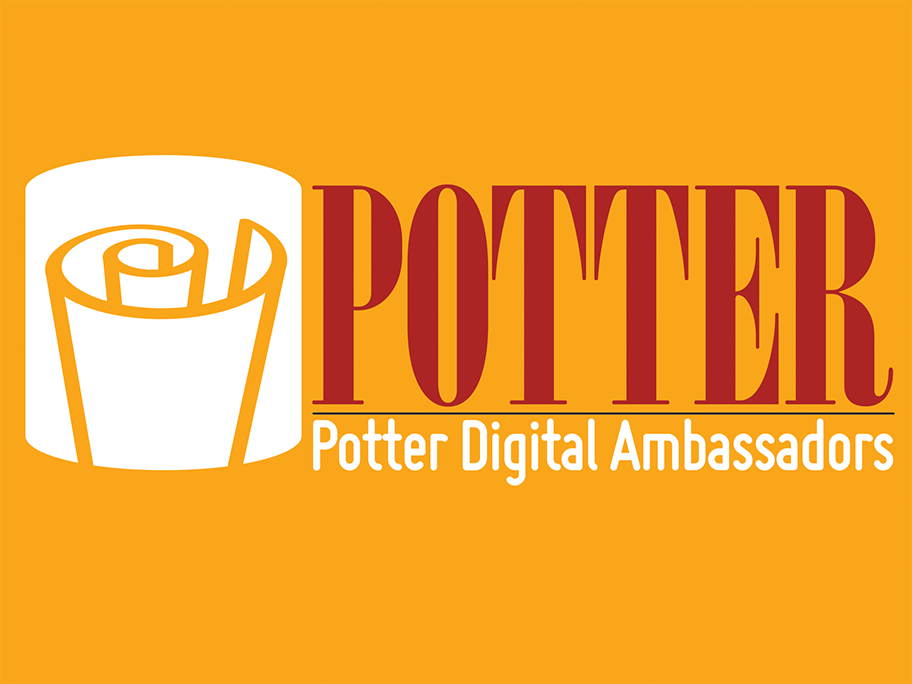
For Missouri community newspapers, Potter Ambassador Program has lasting impacts
During the past three years, about 20 Missouri newspapers have benefited from one-on-one help learning and honing various digital skills such as shooting mobile video or engaging with audiences on social media as part of the Potter Ambassador Program.
Each January, Missouri School of Journalism students are sent to a handful of Missouri newsrooms to learn about the newspapers’ individual digital needs through the program, which is organized by the Donald W. Reynolds Journalism Institute. They bring in a fresh perspective on how to implement or improve these digital skills through the tailor-made program. At the same time, the younger generation gets exposed to community journalism.
RJI decided to check back with past participants to see what they’ve learned and how the program impacted these newsrooms.
“It’s great to hear how about the positive developments during the week of training by the students but it’s even better to hear about all of the lessons that are continuing to make a difference for editors and publishers,” says Randy Picht, executive director of RJI.
The Walter B. Potter Fund for Innovation in Local Journalism endowment funds the program.
Jefferson City News Tribune
One of Managing Editor Gary Castor’s goals was to improve the quality and quantity of the videos they produced. Before the Potter Ambassador program came to the Jefferson City News Tribune, the newspaper’s video footage was nonexistent, says Castor.
The newspaper owns a video camera, and their photographers would occasionally use it. But the small news staff was already spread thin with responsibilities, says Castor, who also oversees the weekly California Democrat and the Fulton Sun, which publishes five days a week.
The ambassador came in and showed the reporting staff how easy it could be to shoot video with a smartphone and simplified some of the technical aspects of producing on a smartphone.
Teaching the reporting staff how to shoot on their phones spread out the video responsibilities to more folks in the newsroom. Now reporting staff can shoot video while also gathering material for a written story.
Since the ambassador left, the newsroom averages about two videos a month, which range from hundreds to up to 1,000 views. Castor says he’d like to produce one to two videos a week eventually and to implement what he’s learned in his smaller newsrooms.
The news staff also asked the Potter Ambassador to help them increase engagement with their community through social media.
The ambassador taught them how to make posts more conversational and less automated. The staff is also trying to do a better job responding to comments and thanking people for commenting, says Castor.
After the ambassador left, Castor saw a need to take a reporting position and turn it into an engagement editor position.
Castor says he is thankful for how the Potter program was tailored specifically to help meet the newspaper’s needs.
“This is a wonderful program, and papers in Missouri need to seize upon the opportunity to use this program because it really can advance where they want to go,” says Castor. “I like that it’s customizable and you can determine how you want to proceed.”
He says his staff consists of people of different ages and reporting backgrounds. Some are new graduates, while others are veteran journalists.
He says the ambassador made the training feel natural for everyone and didn’t try to dumb it down for the new grads or make it seem too difficult for those newer to digital skills.
“[The ambassador] created new energy within the staff to help each other get along, to experiment and to learn from each other’s mistakes and successes,” he says.
Eldon Advertiser
When an ambassador visited the Eldon Advertiser, publisher Trevor Vernon says they didn’t have much in the way of a strategy for using social media. With everyone doing their own thing when it came to posting content, they were often overlapping one another, he says.
“We were all doing different things as a company and hoping that something would stick, and we were completely lost,” he says.
The ambassador helped them become more calculated when it comes to posting. They discuss what to post and when during their weekly staff meeting. They then write down a schedule on a whiteboard in the conference room.
The ambassador also taught the staff how to use Hootsuite and encouraged them to stick to using Facebook primarily where the majority of their audience is, rather than trying to use numerous platforms, says Vernon.
Vernon says the program helped them get a fresh perspective on how to use social media to connect with an audience and share their content. They hope to bring in another ambassador down the road to make sure they’re still on the right track.
“An outside set of eyes coming in and looking at what we’ve been doing made a difference for us,” he says. “We thought we were doing everything OK.”
Platte County Citizen
Editor Cody Thorn says he used to spend an entire morning uploading news content to the website after the print edition was finished. Then he’d spend much of the afternoon promoting the content on social media.
A Potter ambassador introduced him to Hootsuite, which has saved him time. He says he’s since shared the useful tool with another organization in town that has also begun using the social media management platform.
The ambassador showed him how some content, including press releases, can be directly uploaded to the website right away when they’re fresh and keep the news more timely than waiting for a print edition.
The ambassador also encouraged him to be more conversational with their social media or pull out a quote to interest readers, rather than just posting headlines.
When he has more time, he says he wants to play around with shooting videos, which is another skill the ambassador taught him. But for now, he says as a staff of one-and-a-half, they’ve got their hands full.
Potter program inspires others
Dr. Charles Davis, dean of Grady College of Journalism and Mass Communication at the University of Georgia, knew about the Missouri program and decided to see if Georgia could implement a similar program.
He reached out to Dr. Amanda Bright, academic professional at Georgia, who had worked at small to medium size newsrooms and had taught high school journalism earlier in her career, with the concept.
“It was an easy choice for me to want to take this project on,” says Bright, director of the Grady Digital Natives program. “I think what we’re hoping to achieve the first year … is just that sense that the students understand what they can give to local news, but also creating those relationships for the long term. I think sometimes our students think about national placements because national news is so powerful right now in people’s minds, and they forget some of the most important journalism happens in local communities, and it really affects our daily lives. I think creating that pathway is going to be an important part of the process.”
She has begun working with Associate Professor Jeanne Abbott, coordinator of the Missouri program, to learn more about the program and how it works when it comes to training the students and pairing them with newspapers.
Bright says she plans to have a similar program to the one at Missouri where students work with newspapers on digital skills, as well as add in a module based on the Trusting News project.
The Trusting News project, which was founded at RJI and where it receives continued support, has worked with news outlets since 2016 to find out what news consumers trust and to test strategies intended to build trust. The project formed a partnership with Georgia in 2018 to gain additional training and research support.
The students will train newsrooms on how to be transparent and communicate what journalism is and what it does, how decisions are made, and how news is chosen.
Bright says it is her goal to work closely with the Georgia Press Association on the program, which they hope to launch next January.
About Walter B. Potter, Jr.
In 2010, Walt Potter (MA ’81) established the Missouri School of Journalism’s Walter B. Potter Fund for Innovation in Local Journalism. The endowment supports teaching and research centered on journalism that serves small communities, such as towns in rural areas or individual neighborhoods in larger urban areas. Potter says his gift is in honor of his late father, Walter Sr., and is motivated by his career as a journalist as well as his positive experiences as a graduate student at the Missouri School of Journalism.

Comments